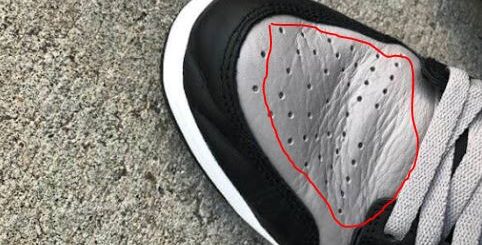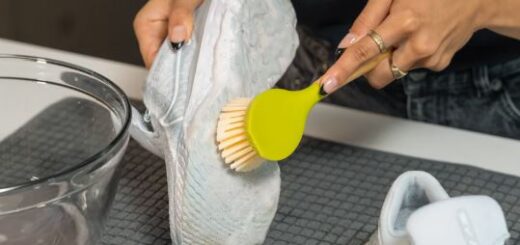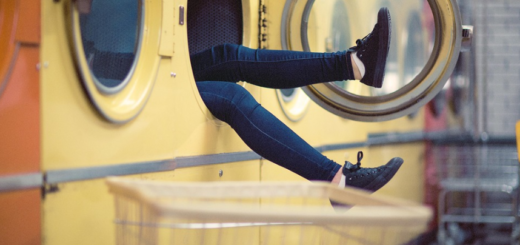Freshening Up Your Footwear: A Guide to Deodorizing Shoes Using Baking Soda
There are few things more unpleasant than slipping on shoes only to be met by a musty, lingering odor. Luckily, you don’t need fancy sprays or expensive devices to tackle the problem. With some baking soda and a few household items, you can effectively neutralize bad smells and keep your shoes feeling fresh. Here are four practical approaches that make use of this pantry staple to deodorize shoes of all types.
Classic Sprinkle and Rest Approach
One of the most direct and effective ways to use baking soda is simply to add it straight into your shoes. Start by ensuring your shoes are dry on the inside, then sprinkle a generous amount of baking soda inside each shoe—enough to coat the entire insole. Gently tilt and shake the shoe to evenly distribute the powder.
Let the shoes sit overnight, or at least for several hours. During this time, the baking soda will absorb moisture and neutralize odors, thanks to its natural deodorizing properties. When you’re ready to wear the shoes again, tip them over a trash can and shake out the powder. Any fine residue can be vacuumed or wiped away if it bothers you. This method can be repeated weekly, but it’s advisable to limit it for leather footwear, as baking soda can dry out the material over time.
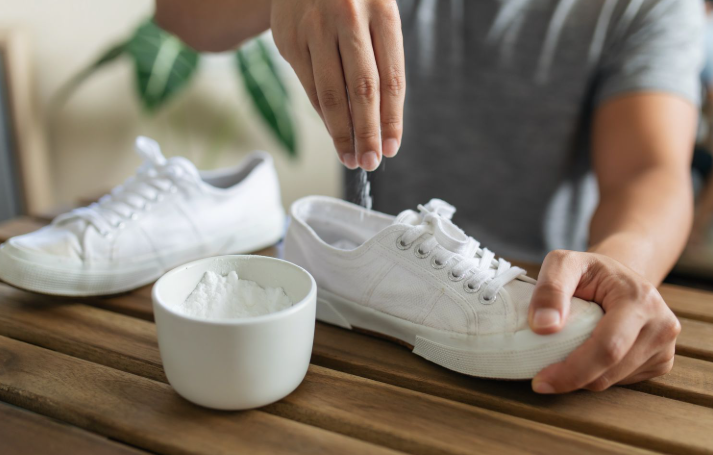
Scented Shoe Treatment with Baking Soda and Oils
If you’re looking to add a pleasant aroma to your shoes while removing odor, consider pairing baking soda with a few drops of essential oil. Begin by mixing two tablespoons of baking soda in a small bowl or container. Add about five drops of your preferred essential oil. Refreshing scents like peppermint, tea tree, lavender, and lemon are ideal.
Stir the mixture thoroughly to combine, ensuring the oil disperses evenly throughout the powder. Then, add roughly one tablespoon of the mixture into each shoe, focusing initially on the heel area. Tilt and tap the shoe to spread the powder towards the toe.
Allow the shoes to sit overnight or up to 24 hours. This blend will not only absorb odor but also leave behind a subtle, clean fragrance. When finished, shake out the powder and reuse this method weekly or as needed. If you’re mindful of your oil usage, rotate this with plain baking soda to save on cost.
DIY Shoe Pouches for Long-Term Odor Control
For a mess-free and reusable deodorizing solution, consider making your own shoe freshening pouches. This works especially well for long-term storage or for shoes you wear less frequently. Begin with two clean socks (they don’t need to match), ensuring there are no holes.
Fill each sock with one to two tablespoons of baking soda and tie them off securely with ribbon, string, or a rubber band just above the filled area. Place each filled sock into the toe area of your shoes and leave them overnight. You can leave them inside for up to two days if the smell is particularly strong.
These deodorizing sachets can remain in your shoes when not in use to keep them smelling fresh. Over time, the baking soda will lose effectiveness as it absorbs moisture and odor, so replace the contents every month or two.

Deodorizing Open Footwear Like Sandals and Flip Flops
Odors aren’t limited to closed shoes—sandals and flip flops can carry smells too. Fortunately, baking soda can help here as well. For a simple fix, cover the soles of your sandals with a thick layer of baking soda. Let them sit on a protected surface like a tray or newspaper for a day. Afterward, shake off the powder and wipe off any remaining residue with a damp cloth.
Another option is to use a sealable plastic bag. Add about half a cup of baking soda to the bag, place your sandals inside, and shake gently. Seal the bag and leave the sandals inside for a day or two. This contained method allows the powder to work more intensively on absorbing odor.
If your flip flops are particularly grimy, you can create a baking soda paste by mixing the powder with water. Scrub it onto the soles using a brush and let it sit for five minutes before rinsing clean. Let them air dry completely before the next wear. For stubborn odors, adding some salt or using Epsom salt in the mixture may provide an extra deodorizing boost.
Rubber sandals can even benefit from a soaking treatment. Mix one part baking soda with ten parts water in a small container and soak your flip flops for 12 to 48 hours. If they float, weigh them down gently with small jars. Once removed, let them dry naturally.
Final Thoughts
Removing bad odors from shoes doesn’t require elaborate tools or expensive sprays. With a few simple ingredients—especially baking soda—you can manage shoe hygiene easily and affordably. From everyday sneakers to flip flops and leather shoes, there’s a method that suits each type of footwear. By incorporating any of these techniques into your routine, your shoes can remain fresh, dry, and ready to wear.
Frequently Asked Questions
How does baking soda eliminate shoe odors?
Baking soda neutralizes unpleasant smells by absorbing moisture and disrupting the acidic environment where odor-causing bacteria thrive.
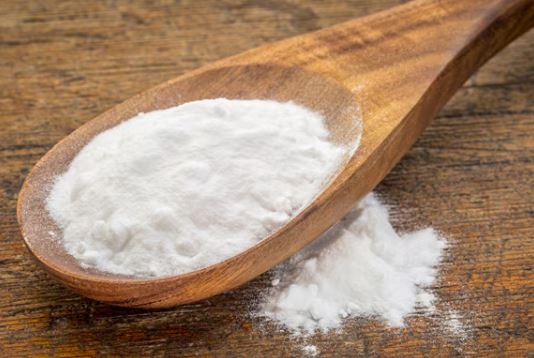
Can I use baking soda directly in leather shoes?
Yes, but sparingly. Frequent use may dry out leather, so consider airing them out instead when possible.
What’s the best way to add fragrance while removing odor?
Mix a few drops of essential oil with baking soda before applying it to the shoes for both deodorization and a pleasant scent.
How long should I leave baking soda in my shoes?
Let it sit for several hours or ideally overnight. For very smelly shoes, up to 24 hours is recommended.
Are there reusable deodorizing methods?
Yes, baking soda-filled socks or pouches offer a reusable and mess-free way to keep shoes fresh over time.
Can I deodorize sandals and flip flops?
Absolutely. You can sprinkle baking soda directly, place sandals in a bag with it, or scrub them using a baking soda paste.
What if odor persists after one treatment?
Repeat the process or combine methods. Persistent odors may require multiple applications or extended soaking times.
Is there a way to prevent odor from returning quickly?
Store shoes in a ventilated space, rotate pairs regularly, and keep DIY deodorizers in shoes when not in use.

